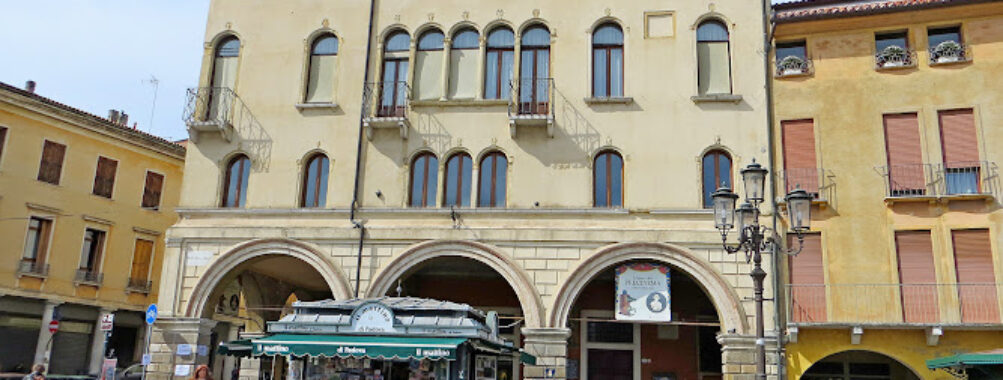
Museum of Precinema
Table of Contents
Description
The Museum of Precinema occupies an atmospheric corner of Padua’s historic fabric, housed in the 15th-century Palazzo Angeli overlooking the wide sweep of Prato della Valle. Visitors step into a compact, carefully curated world where the origin stories of moving pictures are told not through posters or posters-sized screens, but through delicate glass slides, brass lanterns, and creaky wooden machines that still seem to remember the excitement of their first projections. It feels like a small theatrical backstage: tools, tricks, and illusions laid out as if a show might begin at any moment.
This museum specializes in the long prehistory of cinema — the stuff that predates celluloid and projectors as most people imagine them. The collection focuses on magic lanterns (lanterne magiche), hand-painted glass slides from the 18th and 19th centuries, early optical toys, and a range of photographic and projection instruments. Many of the slides are richly painted by hand; up close they reveal brushstrokes, touch-ups, and a kind of domestic artistry that humanizes the notion of “the picture.” Those slides are not mere curiosities: they map how people once gathered in parlors and fairgrounds to be astonished by light and shadow.
What makes the museum stand out is its intimacy and focus. It does not try to be a blockbuster spectacle. Instead, it offers slow, meticulous storytelling. Small cases and vitrines invite close inspection; labels combine historical facts with a storyteller’s eye. The exhibition traces how simple optical games — think thaumotropes, zoetropes, and phenakistoscopes — evolved into more elaborate projection systems that anticipated modern animation and movie projection. For anyone fascinated by the mechanics of vision, this is a dream: gears, lenses, mirrors, and painted glass laid out in ways that make the mechanics legible and, frankly, kind of charming.
Beyond objects, the museum communicates the social side of pre-cinematic spectacles. The artefacts speak to domestic amusement, itinerant entertainers, scientific demonstrations, and the theatrical culture of European towns and cities. A 19th-century magic lantern could do the work of modern special effects — dissolves, ghostly apparitions, moving scenery — and these devices were used in religious teaching, public lectures, and children’s entertainment. The Museum of Precinema brings that social history forward: it’s not only about technology, but about how audiences were made, how attention was trained, and how wonder was manufactured before mass cinema existed.
Practical touches are quietly thoughtful here. The layout respects mobility needs and there is a wheelchair-accessible restroom. Restroom facilities are available on site, though visitors should note there is no museum restaurant — so plan snacks or a café stop in the square afterward. The museum’s scale makes it especially well-suited to families; children tend to be engaged by the tactile, mechanical nature of the objects and the simple visual tricks that are explained in plain language. It’s the sort of place where a curious child’s comment can uncover a new way for an adult to see an object.
For those who like to linger, the museum rewards patience. A typical visit can range from a brisk 30–40 minutes to a more leisurely hour and a half, depending on how many of the explanatory notes and comparative devices a visitor inspects. Special attention is often drawn to a handful of standout pieces: unusually large lanterns with intricate brasswork, dramatic hand-painted slides depicting shadowy street scenes, and small mechanical toys that, once understood, render the sensation of movement as a simple, elegant puzzle. The collection is also notable for how well-preserved many items are, which speaks to careful conservation and a curatorial eye that values narrative coherence over sheer volume.
There are a few lesser-known angles that seasoned visitors appreciate. First, the museum acts as a quiet hub for researchers and enthusiasts of early visual culture; occasional temporary displays and focused showcases dig deeper into topics like ritual uses of projection or the trade networks that moved lanterns and slides across Europe. Second, the proximity to Prato della Valle matters: after inspecting close-ups of painted glass, stepping out into that grand open space gives an odd and delightful contrast — from intimate vision-machines to a public square designed for mass sight lines. Lastly, the museum’s setting in Palazzo Angeli adds a layer of architectural pleasure; the building itself whispers of centuries-old urban life, which complements the historical breadth of the collection.
One small, honest note: the Museum of Precinema does not attempt to be flashy. It succeeds precisely because it isn’t. Those expecting big-screen reinterpretations or immersive multimedia will likely be disappointed. But for anyone who loves the how-and-why of images — students of film and animation history, families with curious kids, design-minded travelers, and people who enjoy artifacts with stories attached — this museum is a rare gem. It invites visitors to slow down, to squint at brushstrokes, to listen to the clack of gears in recreated devices, and to imagine the delighted gasps of audiences who first saw moving pictures long before cinemas made them routine.
Ultimately, the Museum of Precinema is a lesson in wonder that doesn’t shout. It suggests that the origins of moving images are tactile, human, and often surprisingly playful. A visit feels like joining a small, appreciative circle of people who’ve decided to celebrate the cleverness of earlier centuries—and to remember that behind every cinematic trick is a lineage of makers who loved to astonish. For anyone planning a thoughtful cultural day in Padua, this museum offers a compact, memorable detour into the story of how images learned to move.
Location
Places to Stay Near Museum of Precinema
Find and Book a Tour
Explore More Travel Guides
No reviews found! Be the first to review!